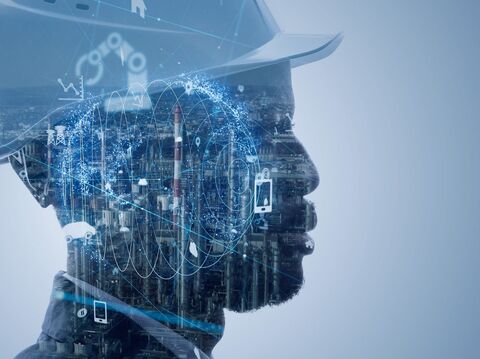E-Commerce Tech Trends: Revolutionising the Way, We Shop Online

Technologies like AI, VR, and blockchain promise to revolutionise e-commerce at a quick pace in the coming years. But what are these tech trends, and how is it changing the industry? While the terminology can be complex, the impact on online shoppers and retailers will be massive. It allows more convenience, customisation, security, and sustainable interactions.
Imagine shopping apps that are smart enough to curate products aligned to an individual's style even before they enter the site. Virtual trial rooms digitally fit garments onto users' bodies, allowing them to visualise the look before buying it. Moreover, even scheduled delivery of household essentials in ethically sourced packaging is possible through IoT reordering.
Innovations can improve the customer experience and offer better retail satisfaction. Advanced tech trends are helping businesses solve the customers' main pain points. Companies choosing modern tech solutions can attract loyal customers and stand out.
This post will look into the future evolution of e-commerce and online shopping powered by the latest tech trends. Explore AI personalisation, virtual reality try-ons, blockchain applications, sustainable delivery, and more.
AI and Machine Learning in E-commerce
One of the most empowering tech advances is Artificial Intelligence (AI). It refers to coded programs that can understand patterns in data and make recommendations or decisions based on it.
Have you seen Netflix automatically playing a new TV show it picked just for your taste? Or Facebook recommending posts from Groups you'd be curious about? That's AI-powered personalisation at work!
The same tech can now tailor online shopping experiences through machine learning (ML) algorithms. These work by analysing your browsing history across sites to understand preferences.
Say you recently viewed floral dresses in an apparel store. As you hop sites, display ads with similar summery styles can populate dynamically and serve just for you. Product suggestions on a retailer's homepage can auto-populate items in line with your purchases.
Super convenient, right? But it gets better with some of the latest tech trends. Some beauty brands allow you to take a facial scan and mix custom foundation formulas based on your skin tone analysis.
Leading e-commerce players are tapping such capabilities for:
- Recommending products that customers likely love and buy.
- Forecasting production volumes needed to fulfil demand.
- Employing chatbots to resolve order inquiries.
- Generating tailored email content to reach audiences better.
In many ways, AI promises to embed that thoughtful human touch digitally at scale!
Of course, there are risks like data privacy to navigate here. But, the consumer-friendly potential is undoubtedly compelling.
To get the best out of modern E-commerce trends, partner with experienced service providers. GrowthJockey can help you scale your E-commerce brand and stay ahead of the competition.
Immersive Shopping with AR and VR
Have you ever wished you could try those stylish pairs of sunglasses in an online store to see if they suit your face? Or visualise that sleek sofa in your living room before purchasing it to assess if it matches your decor.
Emerging technologies called Augmented Reality (AR) and Virtual Reality (VR) make these digital try-ons possible in remarkable ways, enriching the experience.
You're likely already familiar with VR through those fun games and simulations involving headsets transporting you into different landscapes. AR, on the other hand, doesn't fully block your surroundings but overlays computer graphics onto it through your screens or special lenses.
Now, tech startups are taking major strides towards improving the customer journey with the help of ecommerce trends and advancements.
For example, leading cosmetics brand Sephora introduced an AR mirror called Virtual Artist. You can scan your facial features and mix combinations of lip colours, eyeshadows, etc., for an instant digital makeover. You can check how different shades look on you.
Home goods giant Ikea, with its Place app, lets you easily visualise true-to-scale 3D models of its furniture in your room. You can do this by scanning the floor with your phone camera.
As AR/VR tech advances, retailers integrating it early on their sites and apps stand to provide that "try before you buy" dimension to their business. That was the major element missing in the e-commerce industry. This promises to strengthen loyalty and satisfaction while reducing returns substantially.
IoT's Role in E-commerce Evolution
We've grown used to app notifications on our phones. But think - what if your fridge could also alert the grocery store when milk runs low?
That's the handy innovation that's possible through Internet of Things (IoT) tech. It means fitting everyday devices like appliances with connectivity to track usage patterns.
Say a smart fridge automatically scans items with built-in cameras to check when fresh food stocks are empty. Your taste preferences and order history could generate a list to reorder with one click for scheduled delivery. No more errands!
Similarly, your workout watch could add protein bars to your subscription when you're burning extra calories. Or a printer could request fresh ink from the stationery shop when cartridges run low.
IoT sensors and predictive data programs enable this convenient commerce. Early testing shows promise to integrate brands into consumer routines.
Green E-commerce - The Rise of Sustainable Shopping
With awareness growing around environmental impacts, consumers increasingly prefer brands following sustainable best practices.
Green considerations across materials, manufacturing carbon footprint, smart packaging, renewable energy usage in warehouses, eco-friendly shipping options, and more are common now for e-commerce experiences.
For example, athletic footwear maker Allbirds collaborates with giant online retailer Zalando. With this partnership, returned shoes are reused or recycled through redesigned circular supply chains, reducing waste.
Leading parcel delivery company DHL provides options for shoppers to bundle orders or opt for slower methods to cut emissions from fewer trips. DHL also operates vast warehouse solar panel farms and tests recyclable parcel padding made from mushroom roots!
Such initiatives balancing ecology alongside profits require upfront investments but pay dividends, building goodwill and differentiation. Conscientious consumers prefer purpose-driven brands aligned with their principles.
Automation in Logistics and Delivery
Getting purchases delivered quickly has become an essential expectation for ecommerce companies to compete and satisfy customers today. This urgent need is accelerating the adoption of emerging automation tech in warehousing and transportation to enable speed and accuracy.
Inside high-tech fulfilment centres, robots smoothly pick up inventory from shelves to assemble orders for fast dispatch. Conveyor belts then route packages to packing stations with minimal human handling. Some companies like Amazon are even trying drone airlifts to fly time-sensitive parcels directly, avoiding traffic delays!
Self-driving vans and trucks are also preparing to take over short delivery routes in coming years once laws and regulations adapt to these new vehicles. Their autonomous navigation, guided by smart imaging algorithms, permits reliable round-the-clock deliveries and lowers costs.
Summing Up
In the evolving world of e-commerce, cutting-edge technologies like AI, VR, AR, and blockchain are not just tech trends. These latest tech trends are significantly enhancing how we shop online. These innovations are making shopping more personalised, convenient, and engaging. Offering experiences once thought impossible for the e-commerce industry is now simple.
From AI-driven product recommendations to virtual try-ons, the future of e-commerce is being shaped by a focus on customer satisfaction and environmental responsibility. As these technologies continue developing, they promise to transform the online shopping experience further. It will become smarter, faster, and more integrated into our daily lives.
Companies that embrace these changes and invest in the latest tech trends will meet and exceed customer expectations. It will also help them to secure their place in the competitive digital marketplace.
At GrowthJockey, we understand the importance of staying ahead of the ecommerce trends. Our team has the potential to implement advanced technology for business growth. Reach out today!
FAQs
1. How can artificial intelligence enhance my ecommerce experience?
AI allows e-commerce sites to serve you ultra-personalised recommendations suited to your tastes. It’s like having your digital shopping assistant filtering and curating options in sync with your preferences! Many firms also offer chatbots to handle basic queries and customise promotions.
2. What are examples of immersive shopping technology?
Emerging augmented and virtual reality tools enable simulated try-ons, allowing you to digitally ‘wear’ items like sunglasses or clothes before buying. You can see products in 3D overlaid in your actual room environment. These immersive experiences help assess fit and styling and better coordinate with your existing wardrobe pre-purchase.
3. Why is blockchain beneficial for shoppers and merchants?
Blockchain, which securely stores transaction data using networked computer databases, helps verify genuine goods, reducing counterfeits. Scanning a product-specific authentication code can reassure shoppers of authenticity and origin details. For retailers, blockchain aids supply chain monitoring, transparency, and targeted promotions.
4. What are some sustainability best practices in ecommerce?
Leading eco-conscious merchants use renewable facilities for energy needs, ethically source product ingredients, and optimise delivery routes. Packaging also sees pivotal innovation - from biodegradable mailer boxes to recycled padding made from materials like mushroom fibre waste. These initiatives curb environmental impact while meeting customer expectations.








